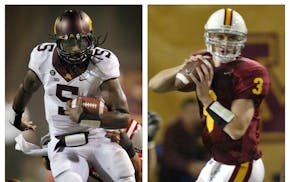My late black Lab — a fine duck dog — was no insomniac.
After a long day afield, he'd fall into a coma as if I'd spiked his water with sleep meds. His breathing would get heavy and deep, his barrel chest expanding and contracting like an accordion. Often from his back, he'd yip and moan while pawing the air like he was shadowboxing. Occasionally, his thick jowls would catch air and slap against his gums, the bizarre sight and muffled sound of which were funny and endlessly entertaining.
I thought about my dog, Buddy, the other day as I inventoried my life as a waterfowl hunter and how I got to where I am, roughly 40 years after donning my first pair of canvas waders and blowing a plastic duck call without so much as a hot clue how to make it sound like a hen mallard. It's been a grand journey, full of travel, intrigue and memories — a holistic education no college could ever provide.
I killed my first duck — a drake woody — when I was 12. But not until two years later, after a stranger's act of kindness at a south metro boating landing, did I began my journey as true-blue waterfowler. Decoys, shotguns, shell boxes and other gear stacked in the canoe, two of my friends and I were about to push off into the morning darkness.
"Your canoe looks a little overloaded," said the stranger, who was 30-something. "How about one of you kids come with me?"
Soon, I was seated in the man's duck boat — complete with a pop-up portable blind — and heading to an out-of-the-way bay that he said would work perfectly for the morning's wind direction. I recall sitting next to his yellow Lab and hanging on the man's every word. His boat was immaculate, his gear organized, his dog calm.
At the bay, I became an apprentice, handing him decoy after decoy as he gave me a running tutorial on why we were doing what we were doing. Decoys set and listing, he oriented his boat snugly against the bulrushes. His boat and blind were already brushed with natural vegetation — a mental note, one of many, I stowed away. As the morning light gathered and shooting time neared, he explained how, based on his decoy spread, the ducks would likely work.
"They should suck right into the open pocket," he said, pouring himself coffee from a Thermos. A lanyard of calls dangled from his neck, and his face was streaked with camouflage paint. "Don't shoot until I tell you to. I'll let you know when."
It's said that time makes fiction of our memories. I beg to differ.
We didn't see or shoot many ducks that morning, but one moment remains crystal clear: A flock of ducks, wild, graceful and free, descending from the sky, succumbing to his calls. An expert crooner, he seduced the flock right into the honey hole, the birds working just like he said they would. It was beautiful.
One shot rang out. I wasn't mine. I couldn't. I was too mesmerized. The yellow Lab didn't move a muscle until the man gave him the command to retrieve — which he executed perfectly to hand. Right then and there I knew one day I'd have my own dog.
"Take a look," he said, handing me the duck.
"What is it?
"A drake wigeon."
I didn't learn everything there was to learn that morning, but my day-trip mentor — a patient and kind stranger — did give me a vision of what waterfowling could be: the spectacular sum of so many exhilarating parts. Meeting him was a happy accident, with waterfowling becoming my joyful obsession. The experience tapped into the pleasure centers of my brain unlike any other outdoor activity before or since.
At its best
Over the years, I've spent countless hours in duck blinds, from the Chesapeake Bay of Maryland to the bayou of south Louisiana to the Central Valley of California, and across the U.S. prairies and Canada. In Minnesota, I've hunted every waterfowl species from Lake of the Woods south.
What I've learned is, waterfowling at its best is a culmination of hard work, skill, art and scientific endeavor — a varied and diverse culture that's unsurpassed and worth keeping alive for its own sake.
As for my old Lab, we had our last hunt together about a year before he died. He made a dandy retrieve on an adult snow goose from a beautiful hemi-marsh east of Bismarck, N.D., where I used to live. It was the perfect coda to our 11 autumns afield.
That night, bone-weary and exhausted, my old Lab disappeared into the sleep of the dead.
Tori J. McCormick is a freelance outdoors writer. Reach him at torimccormick33@gmail.com

Lynx overwhelm pesky Wings in the fourth quarter, improve to 9-0

Twins find fuel in back-to-back homers, defeat Blue Jays

Players to watch in Minnesota's girls flag football state tournament

Twins lose Matthews to injury; Woods Richardson likely to join rotation

